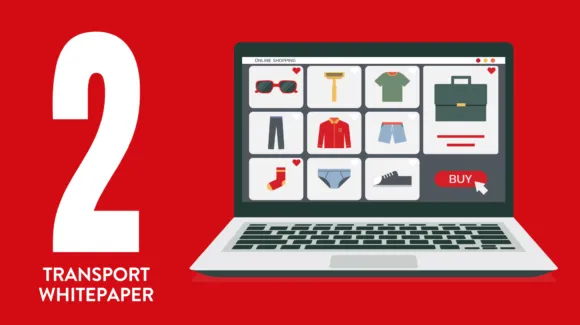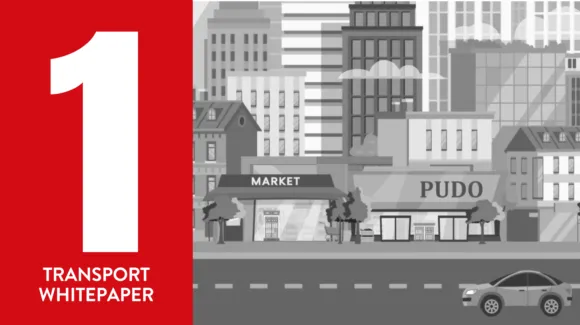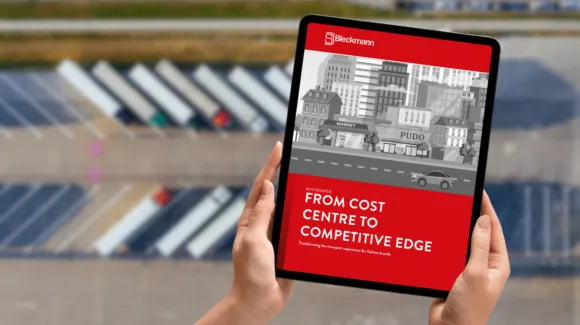Black Friday and other promotional periods present a double-edged sword for brands from both customer acquisition and retention perspectives. A negative experience during these critical windows can alienate existing customers who haven’t received the service they expect. Conversely, exceptional delivery performance can transform bargain hunters into loyal brand advocates. This is why optimising your transport experience for peak season success isn’t just an operational necessity – it’s a strategic imperative.
The most critical test of your transport management set-up is how well it performs during peak periods such as Black Friday and summer sales. These are truly make-or-break moments, and the quality of your preparation can define your brand’s success.
The high stakes of peak period performance create a noticeable ‘amplification effect’. Everything that works well in your transport experience becomes a competitive advantage, while every weakness can transform into a potential brand crisis. Successfully navigating Black Friday and other promotional periods requires focused preparation across three critical dimensions: foundation, planning and differentiation.
Building a strong foundation for peak period success
The cornerstone of exceptional transport experience during peak periods is a flexible carrier network. Single-carrier dependency becomes a critical vulnerability when that carrier faces capacity constraints due to weather conditions, labour disputes or overwhelming demand. Carrier diversification provides essential resilience, but success depends on the relationships you’ve cultivated over time, not just agreements on paper.
Fundamentally, the quality of carrier relationships determines your flexibility when you need it most. Can you guarantee that you’ll have additional capacity during Black Friday week? Will carriers prioritise your shipments when capacity becomes scarce? This preferential treatment isn’t purchased overnight – it’s earned through consistent partnership, reliable volumes and mutual respect developed over years of collaboration.
For our biggest Black Friday clients, we can expect to fulfil up to 200,000 orders in a single day, which means our systems and people are working at full capacity. Without early planning, vital information about promotions shared too late can impact production planning and lead to stock shortages and lost revenue during peak sales periods
Another foundational element is omnichannel inventory visibility. Full supply chain transparency enables accurate inventory management across multiple sales channels – particularly crucial during seasonal demand spikes. The frustration of customers arriving at physical stores only to find advertised products out of stock can be particularly damaging during Black Friday, when shoppers’ emotional investment runs high.
A solid omnichannel foundation becomes even more essential when you consider that peak-period shopping often involves multiple touchpoints. Customers might research products online, check availability via a mobile app, visit a physical store and complete purchases through a different channel. Your transport and warehousing infrastructure must support this fluid customer journey without creating friction at any stage.
The planning phase: understanding the nuances that count
Peak season planning demands months of advance preparation. At Bleckmann, Black Friday preparations with clients begin as early as June for November sales periods. This extended timeline reflects a fundamental truth: the pressure of delivering exceptional customer experiences during peak sales periods puts every system under intense scrutiny. Any inefficiencies or communication gaps become magnified exponentially.
For example, distribution centres often employ temporary staff to cope with the increased workload during peak periods. However, ensuring these temporary team members have the necessary skills to deliver high-quality service is complex. Ineffective training can lead to snowballing inefficiencies precisely when maximum productivity is needed. Given that it takes an average of three days for a picker or packer to reach their optimum productivity rate, successful peak season preparation requires training temporary employees well in advance. This ensures warehouse staff can hit the ground running, contributing to a consistently excellent customer experience.
In addition, clear communication is your not-so-secret weapon for successful peak periods. The sooner you align promotional plans with your logistics provider, the easier it becomes for them to manage inventory across all sales channels. Communication is also essential for successful demand forecasting. In particular, you need to establish a solid understanding of the psychological and financial rhythms of your target market. Take this year’s Black Friday timing as an example: the sales period kicks off on November 21, which falls before payday for most European workers. This timing insight reveals a critical planning consideration – sales momentum is likely to build slowly until Tuesday, November 25, when paychecks hit bank accounts and purchasing power truly activates.
This type of market intelligence illustrates why generic peak season strategies often fail. Fashion brands that understand their customers’ payment cycles, shopping behaviours and decision-making patterns can optimise everything from inventory positioning to carrier capacity allocation. When your transport planning accounts for real customer behaviour rather than being based solely on sales projections, you’re positioning yourself to exceed expectations precisely when it matters most.
Beyond the basics: how transport experience differentiates your brand
Some brands believe Black Friday represents the one moment when normal transport experience standards can be relaxed. After all, aren’t customers simply happy to secure great deals on a pair of jeans from a brand they couldn’t normally afford? Indeed, research suggests that customers demonstrate increased tolerance for delivery delays, with 90% now accepting 2-3 day delivery (especially when shipping costs are lower).
However, this perspective fundamentally misunderstands the strategic opportunity peak periods represent. The influx of new customers creates unique moments for brand differentiation and long-term relationship building. While competitors cut corners on service quality to manage overwhelming demand, brands maintaining exceptional transport experience standards stand to capture disproportionate mindshare and loyalty.
Exceptional transport experience during peak periods doesn’t just satisfy customers – it surprises them. When competitors are struggling with delays and poor communication, brands that deliver consistently, provide proactive updates and offer flexible delivery options have the opportunity to create memorable transport experiences that can generate a lasting positive impression and create loyal brand advocates.
The competitive reality: playing in the digital giants’ league
To a large extent, the transport experience landscape is defined by customer expectations set by e-commerce leaders. For example, Amazon and Zalando have built reputations on maintaining service excellence precisely when traditional retailers struggle. Their operational models prioritise customer experience consistency over short-term cost optimisation, creating benchmarks all fashion brands must consider.
This competitive context means ‘good enough’ transport experience during peak periods may prove insufficient. Customers aren’t comparing your Black Friday delivery performance against your normal service levels – they’re comparing it against best-in-class experiences from industry leaders. Meeting these elevated expectations requires significant investment in infrastructure, technology and partnerships.
In short, peak season transport management isn’t just about surviving high-demand periods – it’s about leveraging these critical moments to demonstrate your brand's commitment to customer satisfaction and operational excellence. Therefore, for brands looking to capitalise on the opportunities offered by seasonal demand spikes, the choice is clear: invest in transport experience excellence, or risk appearing outdated compared to brands that have made customer experience their competitive foundation.
















